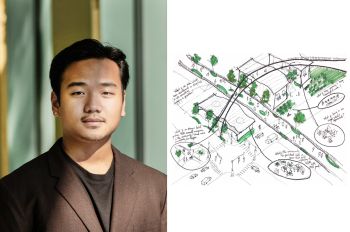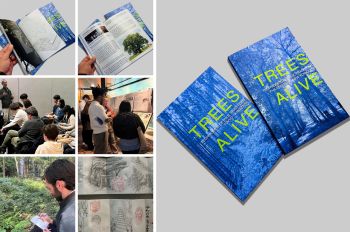Turning the Tables: Architecture Students Redesign Their Desks

TRANSCRIPT
Dominique Sokan (ARCH 2nd Year): So each year in studio you get these plain desks with white tops and metal stands, and it doesn’t really fit every single individual. So this project was to really personalize your desks, and it’s your workstation, and we’re here for a very large portion of the day.
Marshall Brown, Associate Professor of Architecture: The desk project that we had the second-year Bachelor of Architecture students work on this year is called Ceci n’est pas une bureau, which translates more or less directly to either “this is not an office” or “this is not a desk.” And the project was about the students really focusing on their work habits and their design space as new architects.
Sokan: My personal one, so I like to work on the ground a lot, and so I have it where I can either draft or make my models on the top and then I can work on the bottom if I want to.
Mitchell Hawkins (ARCH 2nd Year): We had to personalize it to fit ourselves and our needs and kind of establish how architects work and how we work. I take off the table that was there, and that gets left here but then my pinup space just slides off the back part and then folds down and gets attached to this base that I made. And then this whole part just comes off and comes with me as well as these storage cubes that sit on the back of the desk. They just slide into this cabinet and then this whole thing rolls away.
I think it taught a lot about just craft and thinking thoroughly about something and being practical and not trying to overdo things but making sure that everything is there and works well.
Brown: The students at the end of the semester have to pack up their workstation elements, so a lot of the elements are designed to be portable. There are a lot of wheels involved, many of the students design projects so they fold up and then can be pushed out the door and then stored for the summer, used at home, and then used at least for the rest of the architectural career. So the idea is that they’ll bring them back and set them up again in the fall. And then maybe even after graduation some of them will take them on to wherever they go next. It could be their apartment in New York or their own private studio here in Chicago or somewhere else, in Beijing or Hong Kong or Nigeria, or all the other wonderful places our students are from.




